NRG: A slow and painful recovery
The market may be showing early signs of a recovery, but for many oil and gas companies, the worst is still to come
Welcome to the second edition of NewsBase’s Roundup Global (NRG), in which our team of international editors provide you with a snapshot of some of the key issues affecting their regional beats. Get the NRG Oil & Gas Editor's Picks to your inbox every week for free. Just sign up here.
Oil prices have regained some ground since plunging to near two-decade lows last month, but the recovery will be slow and painful. Oil and gas companies across the globe saw their first-quarter earnings evaporate as a result of the market collapse in March. For many, the current quarter will be even more punishing.
Those producing countries that have imposed output cuts may have won praise for helping to rebalance the market. But their earnings will take an even greater hit if the gambit fails to deliver a meaningful rise in oil prices. Deep spending cuts announced earlier this year have led to record lows in drilling activity, putting unprecedented strain on contractors and suppliers.
African gas focus
Nigeria, sub-Saharan Africa’s largest oil producer, has taken a hit in the last two months, owing to the decline in both energy demand and crude prices. Nevertheless, it is working to develop plans for the expansion of its natural gas sector.
To date, the West African state has mostly concentrated on developing crude oil. (Indeed, it is still working to reduce the flaring of associated gas, which was long viewed as a waste product.) However, its gas reserves are large enough to make it “a gas nation with some oil” rather than an oil-producing country with some gas, according to Tony Attah, the head of the Nigeria LNG (NLNG) consortium.
Attah was quoted by Punch as saying last week that Nigeria’s proven gas reserves amounted to more than 200 trillion cubic feet (5.7 trillion cubic metres). With reserves of this size, it is “time for Nigeria to unleash its gas potential,” he said. He also talked up plans for promoting domestic gas consumption, saying that NLNG hoped to start selling a larger share of its production locally.
The NLNG head was not the only one to examine the domestic market’s potential; Chukwueloka Umeh, the CEO of Century Power Generation, told The Guardian last week that the economic fallout from the coronavirus (COVID-19) pandemic ought to serve as an incentive for the promotion of domestic gas-to-power projects.
“It is time to do things differently ... Pick a set of regulations, such as the ones that birthed the only project-financed power plant in Nigeria to date, Azura power; respect contracts and the rule of law to give local and foreign investors comfort, and just get it done,” he said.
If you’d like to read more about the key events shaping Africa’s oil and gas sector then please click here for NewsBase’s AfrOil Monitor.
Asian state aid
The oil price crash has sideswiped Asia’s energy markets, sparking legal battles and forcing governments to consider financial aid for those state-owned companies exposed to the current market volatility.
Three of India’s High Courts are reportedly hearing five cases related to the settling of April crude oil contracts at negative rates, with the Multi-Commodity Exchange’s (MCX) inability to account for negative pricing at the core of three of the disputes.
Indonesia, meanwhile, is understood to be reviewing plans for bailout for 12 state-owned firms, including national oil company (NOC) Pertamina and power utility Perusahaan Listrik Negara (PLN). Pertamina is set to receive the assistance after having seen fuel sales collapse in the wake of the government’s COVID-19 quarantine measures.
Amid the doom and gloom there are signs that the industry is adapting, however, with projects being green-lighted and acreages being released.
State-owned Coal India Ltd (CIL) has invited bids for two coal-bed methane (CBM) developments, opening the acreages to local and international players. CIL is looking to sign revenue-sharing agreements for the blocks, which are expected to require $325.9mn worth of investment. Adani, Essar and Reliance Industries Ltd (RIL) are understood to have participated in a pre-bid meeting.
State-run Oil and Natural Gas Corp. (ONGC) has awarded production enhancement contracts (PECs) covering 49 marginal fields to seven bidders. The company had invited bids for PECs covering 64 onshore fields, which were split into 17 contract areas, in June 2019. While the winners must boost output beyond a pre-agreed-upon baseline volume, they will enjoy complete freedom when it comes to selling the production.
In Australia, meanwhile, the Queensland State government has launched its delayed bid round for more than 6,700 square km of land to developers. The auction had been suspended in March as the country ramped up social quarantine measures in response to the COVID-19 pandemic. Twelve blocks have been opened to tender across the Bowen and Surat basins.
If you’d like to read more about the key events shaping Asia’s oil and gas sector then please click here for NewsBase’s AsianOil Monitor.
Downstream petchem progress
In this week’s Downstream Middle East & Africa (DMEA), we look at how the next supply war could play out in the LNG arena.
Market leader Qatar is on a major push to increase its liquefaction capacity from 77mn tonnes per year currently to 126mn tpy by 2027. But in the shorter term, with producers vying for market share, it may have to choose between curbing LNG output or getting entangled in a supply war that hurts gas prices.
Qatar Petroleum has the edge over its rivals given the low cost of its LNG production. But it too has reportedly had to make cuts to spending to steer through the crisis.
In Saudi Arabia, Advanced Global Investment (AGIC) is pushing ahead with a $1.8bn propane dehydrogenation and polypropylene project in Jubail. It has selected US firm Fluor as a project management consultant – the latest in a number of foreign companies to secure contracts relating to the project.
Saudi Arabia is eager to build up its petrochemicals business to monetise domestic gas and establish a greater economic hedge against low oil prices. But conditions are far from ideal, as evidenced by the financial difficulties Saudi petrochemical giant SABIC is going through.
If you’d like to read more about the key events shaping the downstream sector of Africa and the Middle East, then please click here for NewsBase’s DMEA Monitor.
European refining pressure
In Europe, refiners continue to reel from the slump in fuel demand caused by COVID-19 travel restrictions.
European refining has had many ups and downs over the past decade, but current conditions could spark a wave of closures without ample state support.
Fuel demand in Italy, one of the hardest hit by the pandemic, plunged 45% year on year in April, according to new data, with a 35% decline expected in May. The country was the first in Europe to impose a nationwide lockdown in early March, but restrictions are now being gradually eased.
Italian refiners have responded by cutting runs, with Eni maintaining its plants at only 60% of capacity.
Elsewhere, Scotland-based refiner Ineos is reportedly seeking an emergency loan from the UK government for its joint venture with PetroChina. It may turn out to be a contentious issue in the public’s eye, as Ineos’ owner Sir Jim Ratcliffe is one of several UK billionaires to seek state support, despite having moved overseas for tax purposes.
Greece’s Hellenic Petroleum has bucked the trend, reporting a slight increase in core earnings for the first quarter. Rather than cutting runs, it boosted production in the quarter and sold more products overseas.
In Norway, state-owned Equinor has taken a final investment decision (FID) on a landmark project to capture, transport and store carbon in the North Sea. Pending approval from Norwegian authorities, Equinor and its partners Royal Dutch Shell and France’s Total are set to invest $670mn in the scheme’s first phase.
If you’d like to read more about the key events shaping Europe’s oil and gas sector then please click here for NewsBase’s EurOil Monitor.
FSU losses
Russian oil producers enjoy a cost edge over many of their international peers, but they too have seen earnings slump on the back of weaker prices and a collapse in demand.
State oil giant Rosneft swung to a net loss in the three-month period, as low prices caused it to book hefty write-downs and the devaluation of the Russian ruble inflated its foreign-denominated debts. Rosneft’s core earnings also plummeted, even though its margins remain the envy of many of its foreign competitors.
Russia’s largest independent gas producer Novatek also posted a net loss and weaker core earnings in late April, and we are likely to see a similar picture with most of the country’s producers. The case was the same following the 2014 oil price crash.
The second quarter is set to be more gruelling for Rosneft, with oil prices showing limited recovery and OPEC+ production cuts coming into force.
Meanwhile national gas company Gazprom suffered a major setback last week when German regulators denied its Nord Stream 2 gas pipeline a waiver from EU energy rules. This will require Gazprom to ensure third-party access to the pipeline and potentially cede majority control of it. Under Russian law, Gazprom has exclusive rights to export Russian gas via pipeline and Moscow is unlikely to end this monopoly, through fear of creating competition between domestic suppliers. As such, the company will likely have to get creative in complying with EU legislation.
Belarus has been importing US and Saudi oil over the past month, as its spat with top supplier Russia continues. The market collapse means these oil supplies are now affordable, but this may not be the case for long as prices recover.
If you’d like to read more about the key events shaping the former Soviet Union’s oil and gas sector then please click here for NewsBase’s FSUOGM Monitor.
Positive signs in LNG
Some positive signs for the LNG market are emerging, though the overall picture remains bleak. A growing number of US LNG cargoes are thought to be reaching China as the Asian country cautiously restarts its economy, having been the first to lock down earlier this year in response to the outbreak of the new coronavirus.
According to ClipperData, seven vessels delivered US LNG cargoes to China between April 20 and May 14. This marks the first time in over a year that US LNG has been shipped to China, and more cargoes will be on the way.
However, relations between the two countries remain fragile after they reached a preliminary Phase 1 trade deal in January that has already been severely undermined by COVID-19. Under the deal, China agreed to buy an additional $52.4bn worth of energy products from the US, including crude oil and LNG. However, lockdown put the brakes on the country’s energy demand, and initially there were also tariff issues to resolve. Beijing recently started granting tariff waivers to some LNG importers as China emerged from lockdown, prompting shipments of the fuel from the US to resume.
However, China is still set to fall far short of its target for purchases of US energy. And US President Donald Trump recently threatened to pull out of the Phase 1 deal if China fails to meet its purchasing obligations.
This has led US industry groups to call for long-term contracts with US LNG terminals to be counted towards the Phase 1 targets.
Separately, China is continuing to expand its LNG import infrastructure. China’s National Petroleum and Natural Gas Pipeline Network Group (PipeChina) said in a May 16 statement that construction had started on a new LNG terminal in Yantai, Shandong Province. The facility, which is set to enter service in 2023, will have an initial capacity of 5mn tonnes per year. This will be ramped up to 20mn tpy, though a timeline for this has not been provided. State-owned PipeChina is developing the facility jointly with Nanshan Group.
If you’d like to read more about the key events shaping the global LNG sector then please click here for NewsBase’s GLNG Monitor.
Latin American fuel shifts
Both Brazil and Mexico have been dealing with shifts in their domestic gasoline markets over the last week.
In Mexico, the retail fuel association Onexpo reported that gasoline consumption had dropped significantly as a result of the measures introduced to contain the coronavirus pandemic. The latest official data from the Ministry of Energy show that gasoline sales dropped to 538,000 bpd in the week ending on April 10, down by 32% on the figure of 797,000 bpd recorded for the week ending on March 20. Unofficial data indicate that consumption levels sank even further, falling to 319,000 bpd by late April.
The decline is likely to put pressure on fuel retailers, according to Grupo Arco, a company that operates a chain of 105 filling stations in Mexico. Nevertheless, US-based Valero has unveiled plans for expanding its downstream operations in that country. Last week, the firm said it wanted to add another 60 retail outlets to its chain in Mexico by the end of the year. Valero opened its first station in Mexico in January and has already brought the number of its outlets up to 40.
Meanwhile, Brazil is gearing up for the introduction of new specifications for E27 gasoline on August 3. The revised standards will affect the fuel’s Research Octane Number (RON) and specific mass. According to Argus Media, the changes in these two categories are likely to make imports of unblended gasoline more expensive, since suppliers will have to use denser gasoline components that have higher octane ratings in order to comply with specifications.
These expectations have helped to widen the price gap between domestically produced gasoline and imported gasoline. As a result, Brazilian importers are showing considerably less interest in bringing fuel into the country in June or July.
If you’d like to read more about the key events shaping Latin America’s oil and gas sector then please click here for NewsBase’s LatAmOil Monitor.
Middle Eastern cutbacks
This week focuses on what might be a surprising development in the oil market: the dramatic response of OPEC+ to the oil price crash by its embarking on an unparalleled programme of production cutbacks. The depth of these cuts was such that the secretary-general of OPEC expressed confidence that the worst of the oil crisis could be over. A month on from the nadir of the oil price, this is a striking view.
A second theme is the evaluation of two recent developments in the gas market. With the ripples of the oil market crash now spreading to its gas counterparts, Qatar may have to choose between curbing LNG output and risking a market share battle that hurts gas prices. Although it has an edge over rival LNG producers, it may have no choice but to cut output. At the same time, rival moves for energy rights involving Turkey, Greece and Cyprus are afoot in the Eastern Mediterranean and Black Sea; these moves include the EastMed pipeline deal sailing through a Greek parliamentary committee.
The notable first action of the new government in Iraq will no doubt test its mettle and attract interest as the likely forerunner of other major decisions.
Flashpoints involving Iran and the US, and the Gulf of Aden, feature, as do the woes of the iconic American University of Beirut, for so long a beacon of sanity and hope in this troubled region.
If you’d like to read more about the key events shaping the Middle East’s oil and gas sector then please click here for NewsBase’s MEOG Monitor.
Historic lows for North American rigs
The active US oil and gas rig count has fallen to an all-time low for the second consecutive week. In the week up to May 15, the total rig count dropped by 35 to 339, according to the latest data from oilfield services firm Baker Hughes. This comes after active US rigs had decreased to a previous all-time low of 374 the previous week.
The previous record-low was 404 rigs, recorded in May 2016 during the last industry downturn. Records of rig counts begin in the 1940s.
The collapse has been rapid, with the US rig count standing at 987 a year ago, declining somewhat to 796 at the start of 2020 and remaining relatively steady until mid-March, when it was still at 792. The oil rig count stands at 258 as of May 15, having slumped from 683 on March 13. The gas rig count has shown a much more modest decline from 107 to 79 over that period, illustrating the toll on oil-focused producers in particular.
Rig counts in Canada have also fallen to a record low, dropping to 23 in the week up to May 15. The oil rig count has stood at just seven for three consecutive weeks, and has been in single figures since the start of April. It is worth noting that rig counts typically drop in Canada in the spring as snow melts, forcing a lot of activity to stop. Nonetheless, the severity of this downturn has exacerbated the situation. For comparison, during the last downturn the lowest Canadian rig count was 36, recorded in May 2016.
There is concern that the bottom of the market has not yet been reached, and more rig cuts will follow. However, in better news for the industry, there appears to be little sign of West Texas Intermediate (WTI) prices going negative again as the June contract comes up for expiry on May 19. As of press time, WTI had jumped to around $32.5 per barrel – its highest level in around two months. This is being attributed to output cuts and early signs of a gradual recovery in demand for fuel.
If you’d like to read more about the key events shaping the North American oil and gas sector, then please click here for NewsBase’s NorthAmOil Monitor.

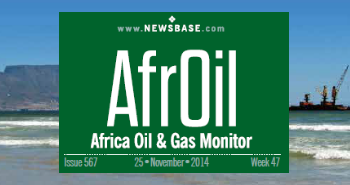

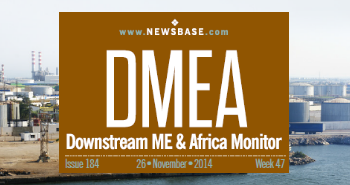

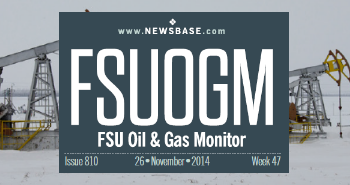
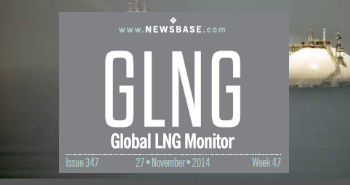
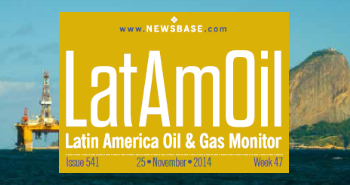


Follow us online